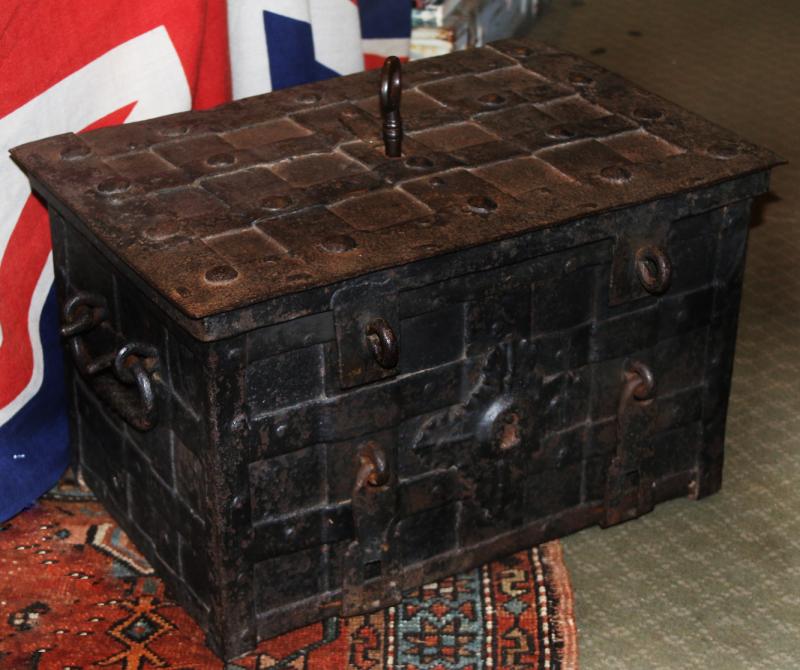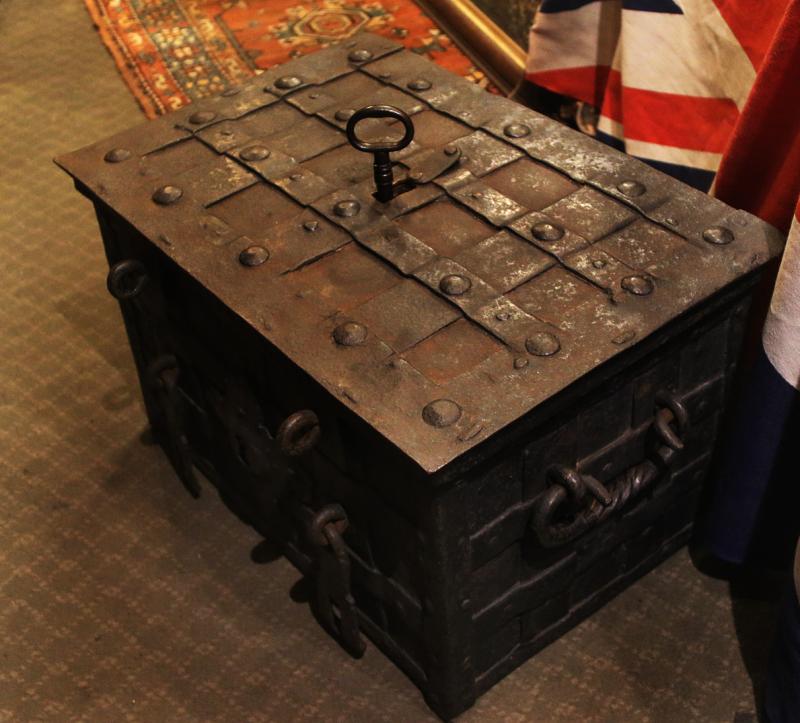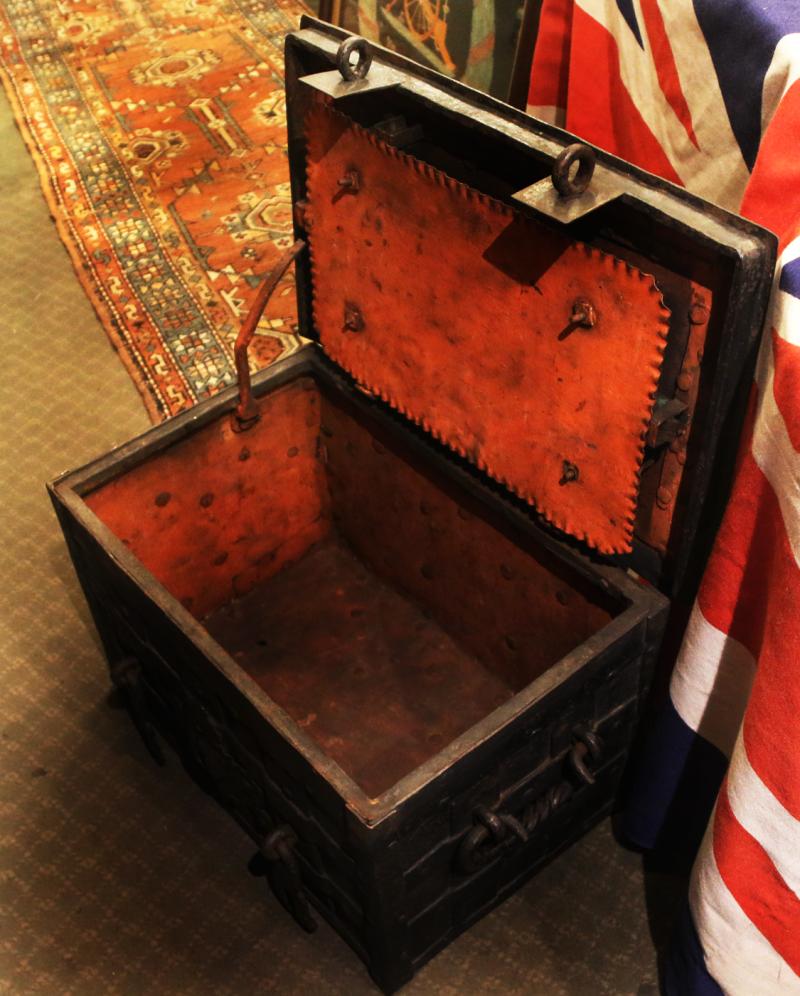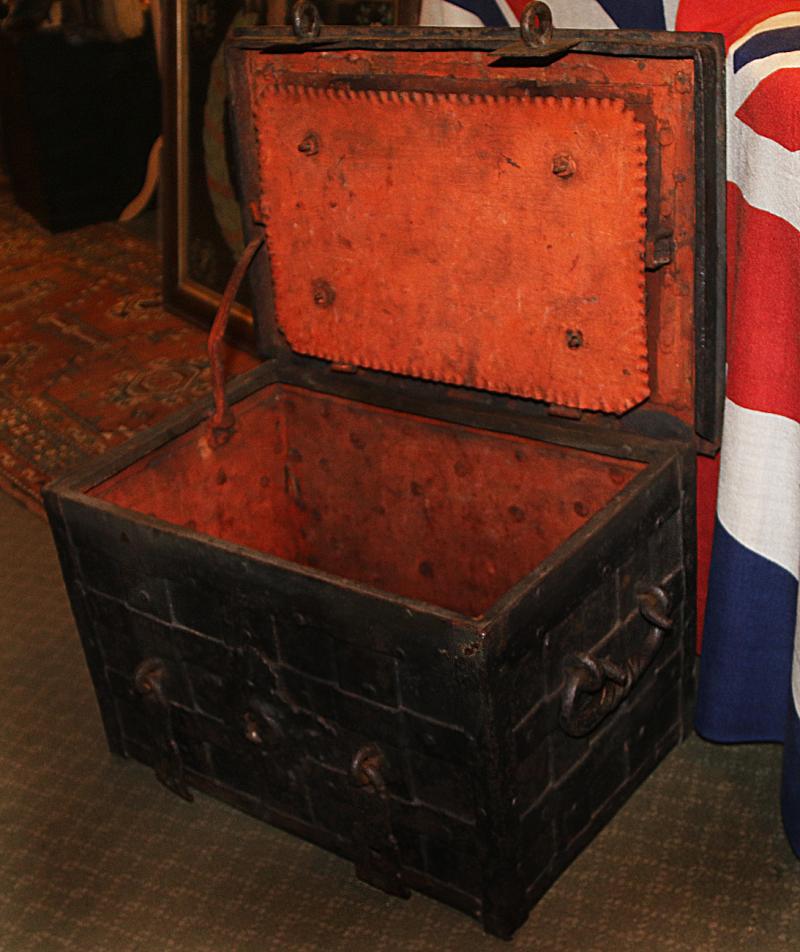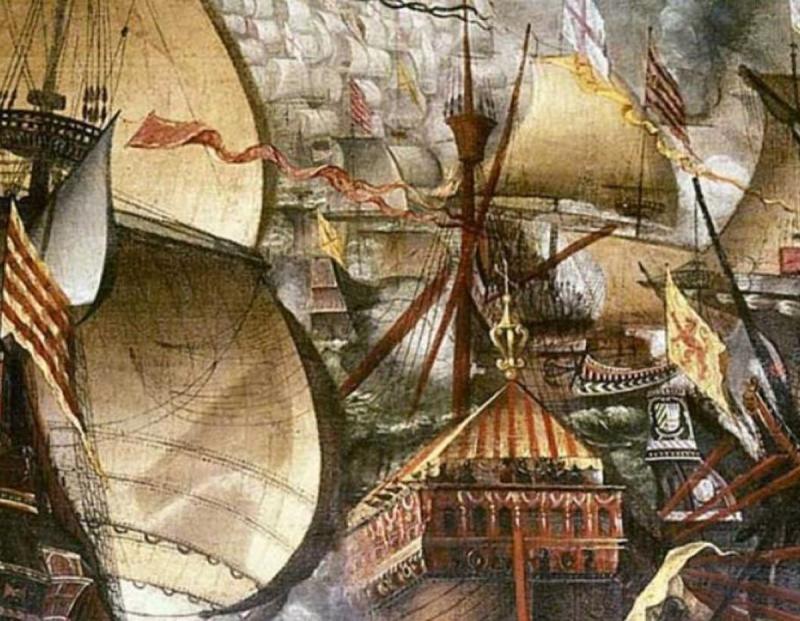An Exceptional And Rare, Late-Renaissance, 1500's to Early 1600's, Nuremberg, Iron, Strongbox or Ship's Treasure Chest, With its Original Key. Used Aboard Galleons To Store The Ship's Bullion or Treasure
Also known as in some quarters as a Pirate's Treasure Chest, for when the pirates of the King James and Queen Anne period captured ships, their victim's ship's gold and treasure were in chests exactly such as this, and then, they were transferred by block and tackle to the pirate's ship {see an antique print of Captain Avery loading treasure into his ship's hold in the gallery}, and later, it would have been exactly such chests, containing their stolen booty, including jewels, treasure, gold doubloons etc., as was buried by the pirates in the deserted Caribbean Islands, as described by Robert Louis Stevenson's treasure Island.
Although made primarily in southern Germany during the 16th and 17th century, especially the Nuremburg region, these boxes were identified in the Georgian period to be Spanish treasure chests, and were henceforth called Armada chests in the 19th century. Some were for the use of ship's captains at sea, and would have been bolted to the deck of the owner's cabin.
During the sixteenth and seventeenth century money chests were forged completely in sheet iron and reinforced with intersecting strips and fittings made of iron. In the fifteenth and sixteenth centuries, a host of cities in southern Germany, Austria and Switzerland were renowned for their craftsmanship, especially Augsburg and Nuremberg. The shops were usually old family businesses in which younger generations were trained by their elders. They became extremely skilled blacksmiths, along with equally skilled colleagues in specialities such as sheet metalworking, etching, hammered inlay, steel-plate engraving, painting and rustproofing.
By the dawn of the Renaissance they had already achieved a strong tradition of craftsmanship and a dominant position in Europe. Forging production in certain cities focused mainly on steel and iron armor, as well as equipment for entire armies of foot soldiers, cavalry, officers and horses. Blacksmiths produced all types of small arms for the era, along with accessories, swords, rapiers, lances, helmets, breastplates, and armor.
Armada chests and money boxes were in demand far beyond the borders of the German states and were used to hold taxes, tariffs, and soldiers’ wages, jewelry, coin and bullion of nobles as well as treasure taken by pirates.This chest is in great condition. The locking mechanisms work nicely and the chest includes its original key.
An 1837 woodcut from The Pirates Own Book by Charles Ellms depicting Henry Every receiving three chests of treasure on board his ship, the Fancy.
Code: 25269
5750.00 GBP


